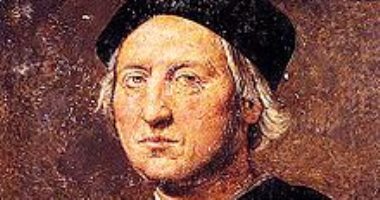Today, the 529 anniversary of Christopher Columbus on the island of Puerto Rico in the New World, during his second trip to the new world, and upon his arrival to the island were inhabited by the Tainos tribes and they called the island “Borekin” or “Broencin”, but Columbus called it “San Juan Poitista “relative to St. John’s Baptist.
The history of Puerto Rico with the settlement of the Aostunoid people in the archipelago of Puerto Rico between the years 3000 and 2000 BC.
The original culture prevailing at the time of Christopher Columbus arrived in the New World in 1492 is the Tinos culture that ended in the second half of the sixteenth century due to the exploitation of the Spanish settlers and the war they launched against the Tinyin and the diseases they brought.
The first Spanish settlement was “Kabara”, and it was established on August 8, 1508 by Juan Pons de Liu, and he was an asset working under Columbus and later became the first ruler of the island.
After the discovery of Columbus for Crystone, and San Juan Botista called it a tribute to Huan Emir Estorias (1478-1497), Fernando II and Isabelle, the first, and seized it in the name of Taj Castile on the nineteenth of November 1493 after arriving at the beach of the city of Ajwada now, the first Capara colony was formed in The eighth of August in 1508 by Juan Pontha, de Leon, is a lieutenant in the Columbus army and later became the first ruler of the island.
In the year to the colony was abandoned in favor of another island close to the coast called Puerto Rico and has a natural port. In 1511, a second colony was established in the southeast of the island. During the twenties (1520), the island took the name of Puerto Rico, while the port turned to San Juan.
Colonialism is an application of the assignment system that the Spaniards applied throughout In order to end the exploitation of the indigenous population, this law prohibited the use of punishment in any way against the indigenous population, organizing their working hours, salaries and health condition, and causing them to learn the origins of the Christian religion.
In 1511, the Tinos rebellion against the Spaniards, as Orwan returned to the plans of Ajwabbana and ordered the dumping of the Spanish soldier, Diego Salthido, to decide whether the Spaniards were to die or not, and they kept the body for 3 days after it was dumped to make sure of his death. Nevertheless, the revolution was easily extinguished by “Ponghi de Leon” and after a few decades the population perished due to diseases, violence and the rate of death suicide..

